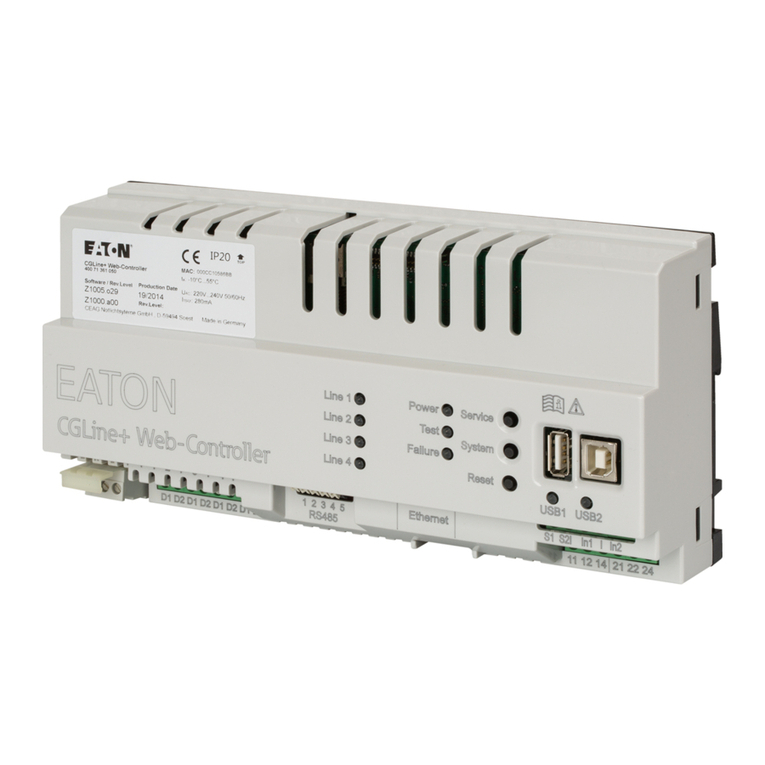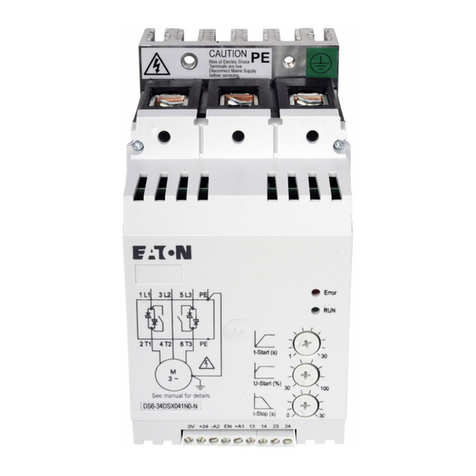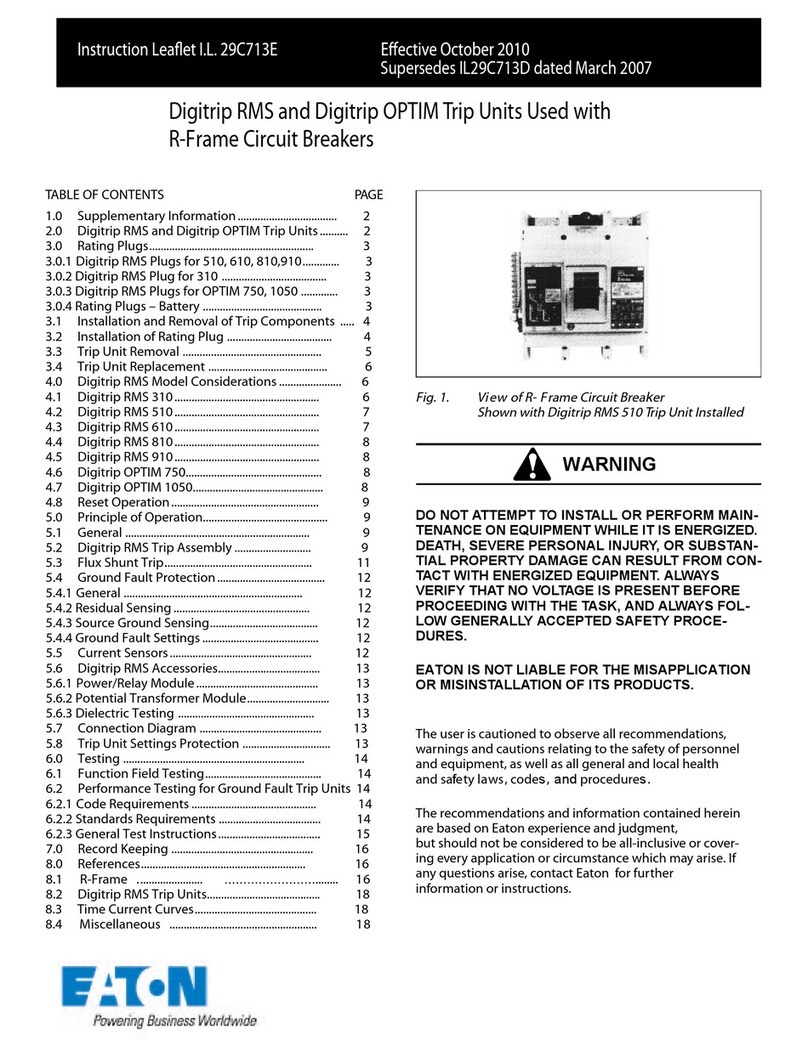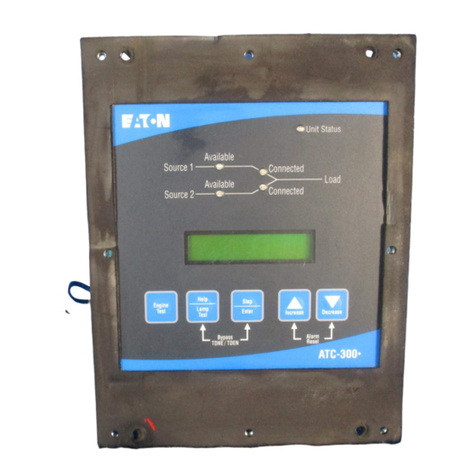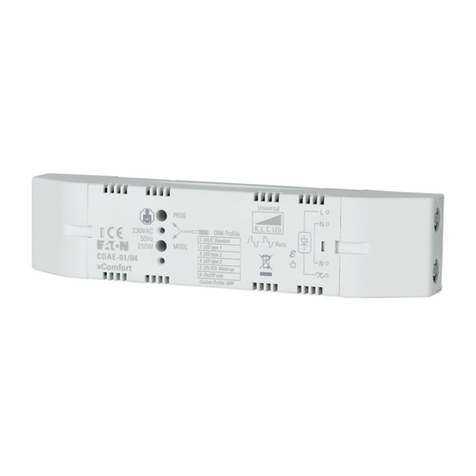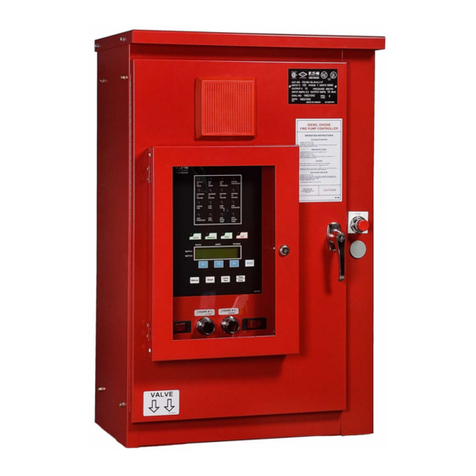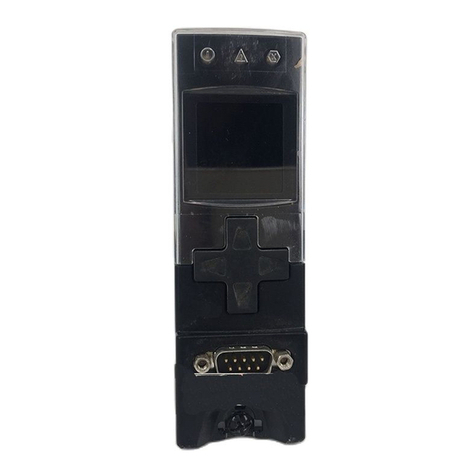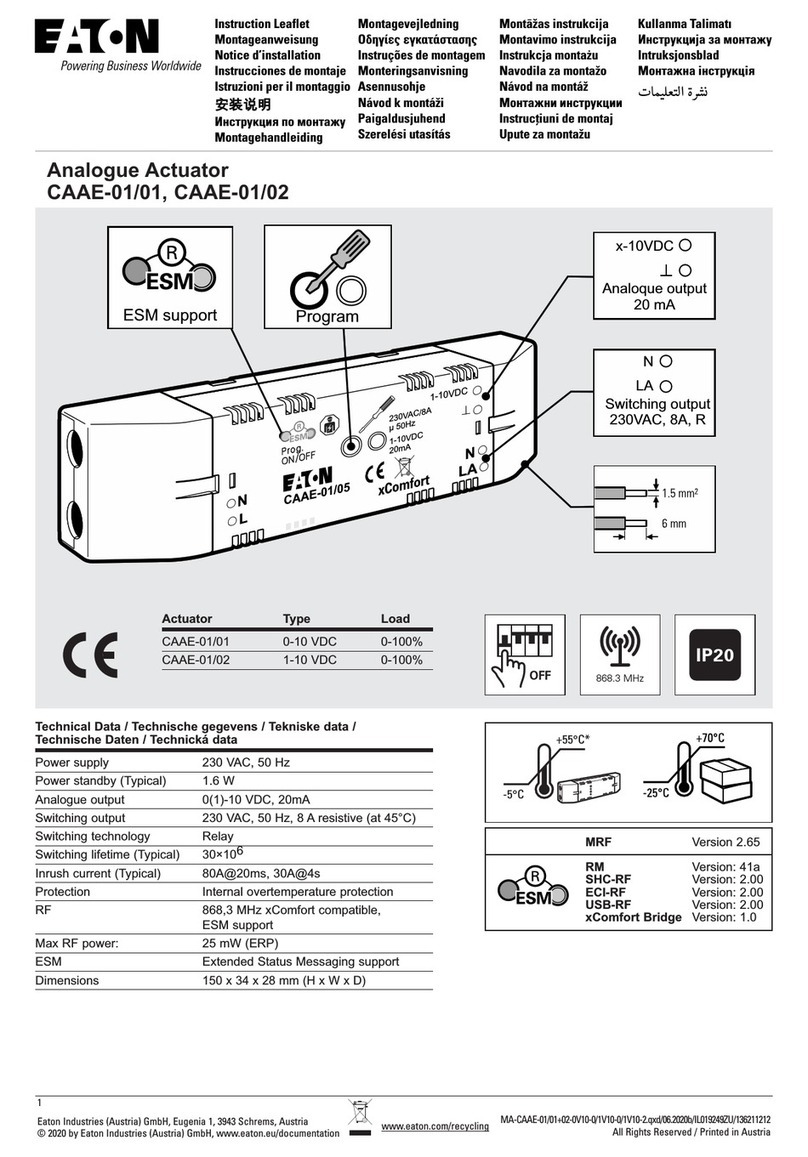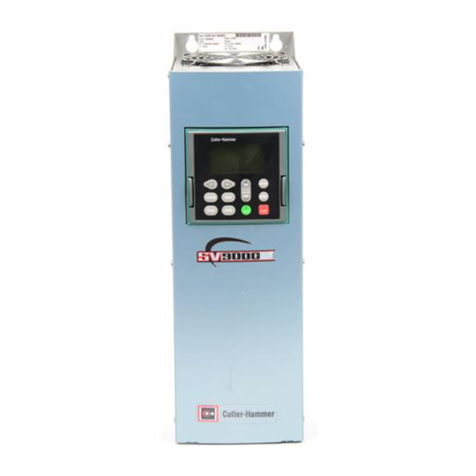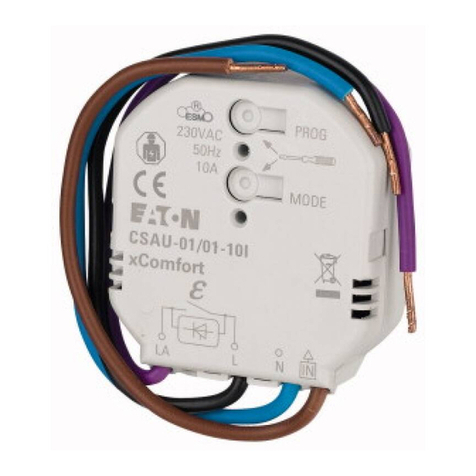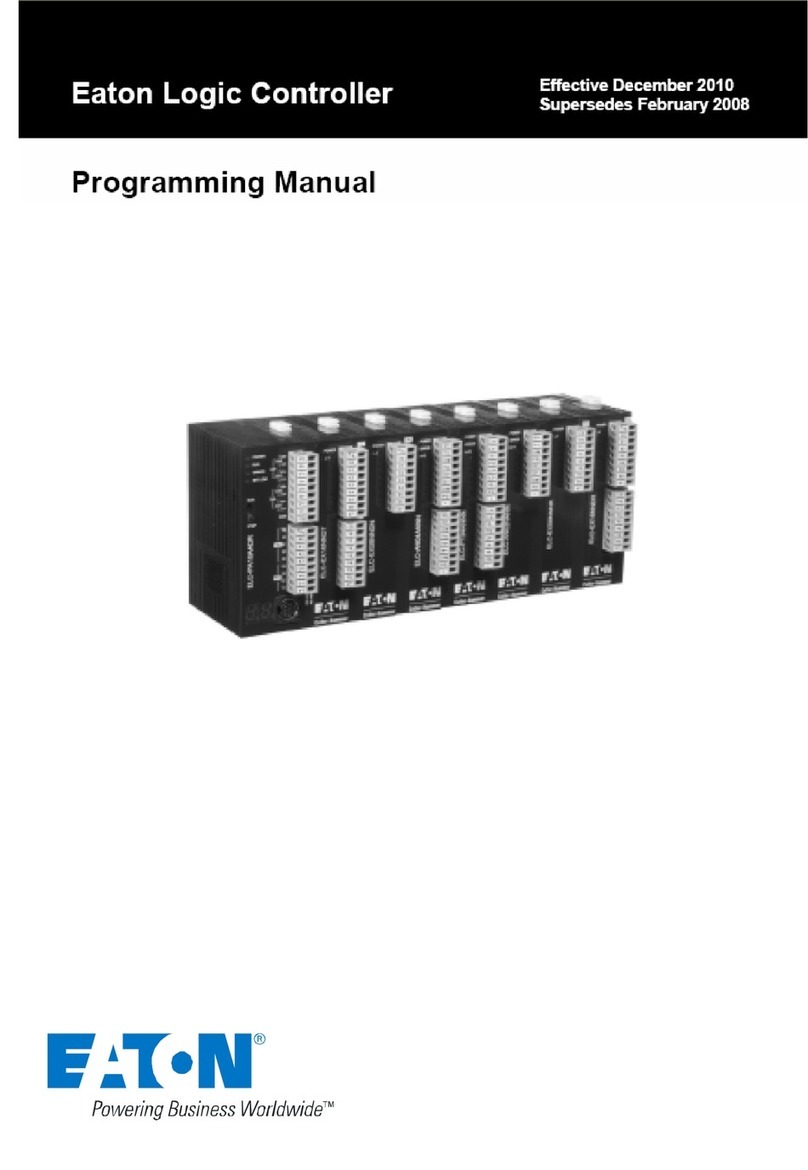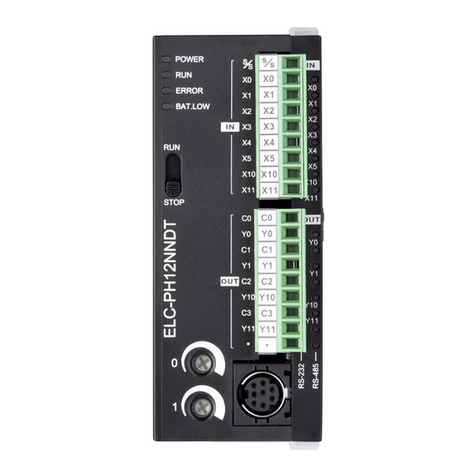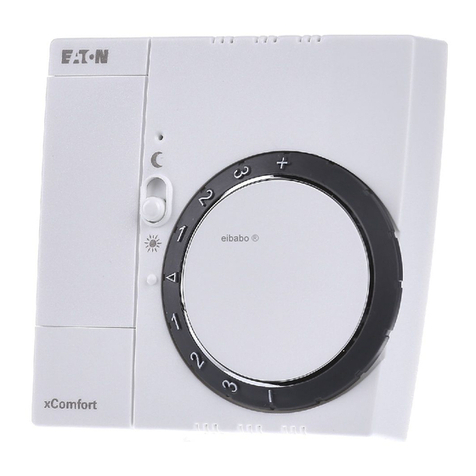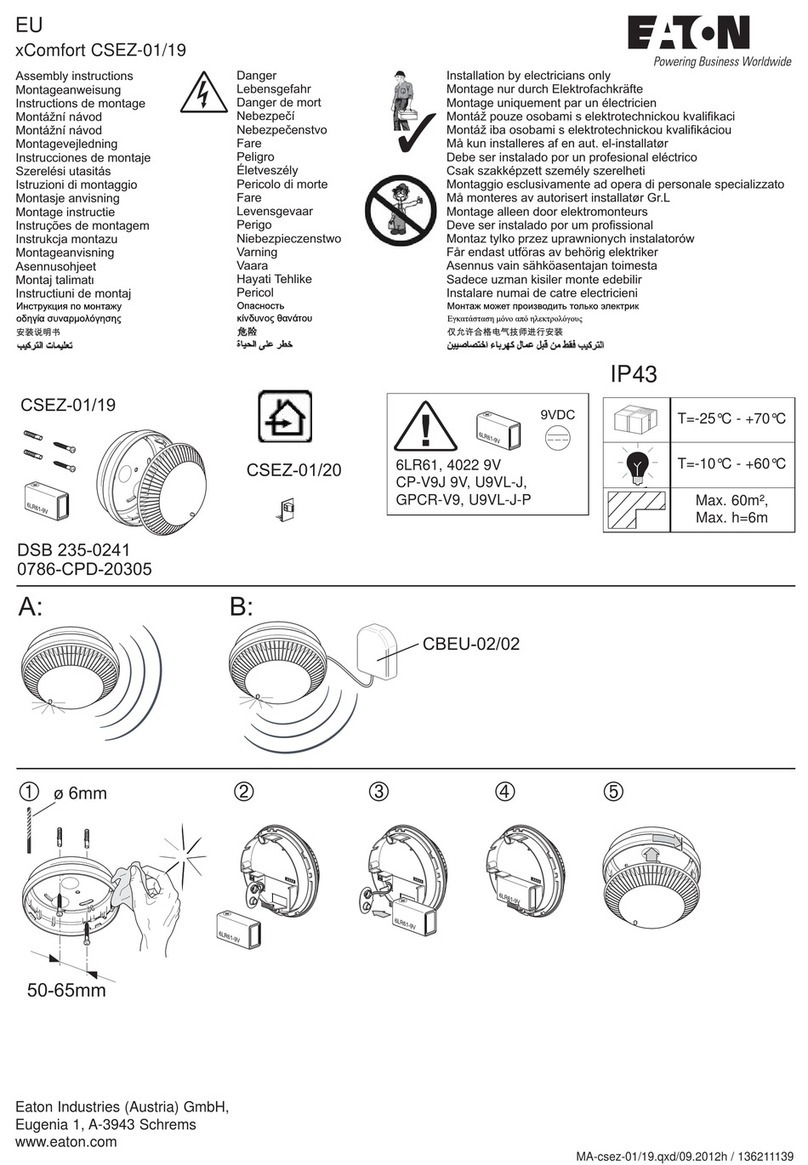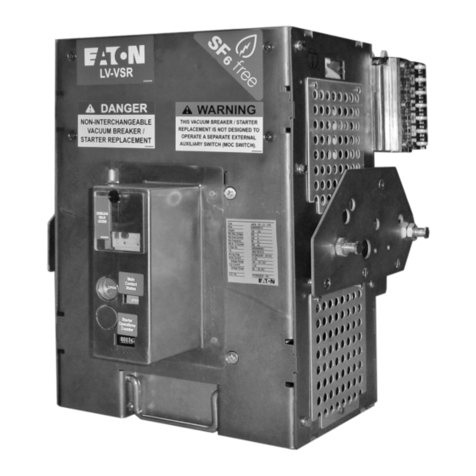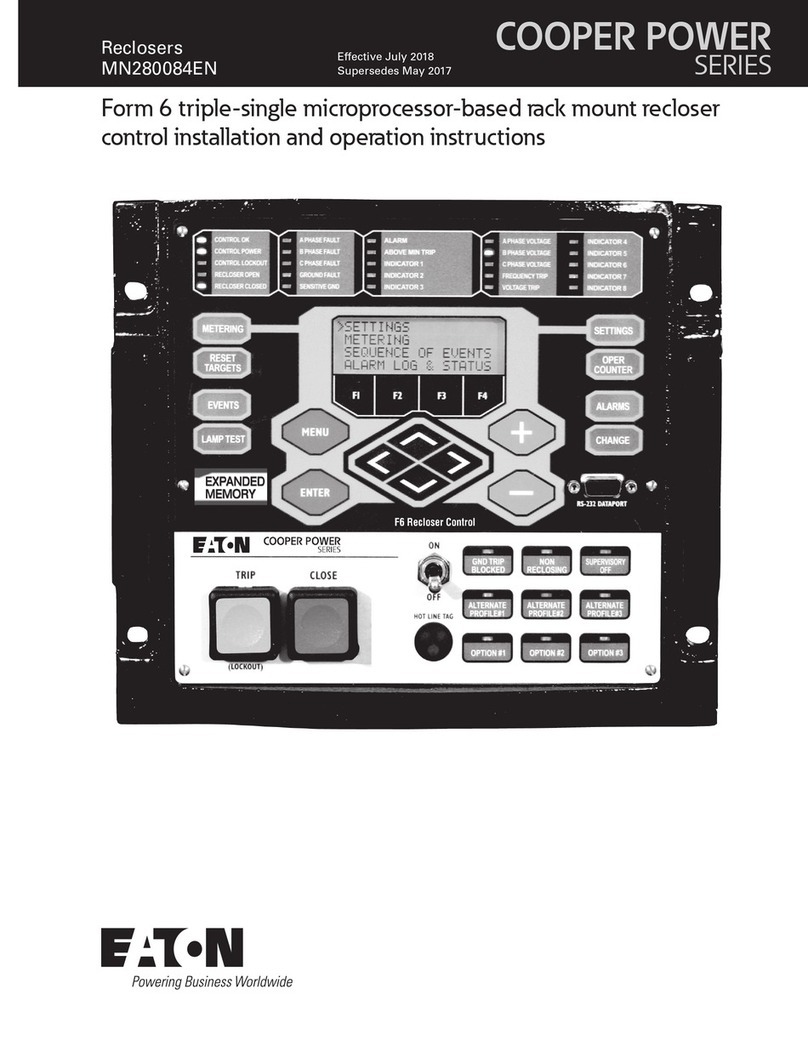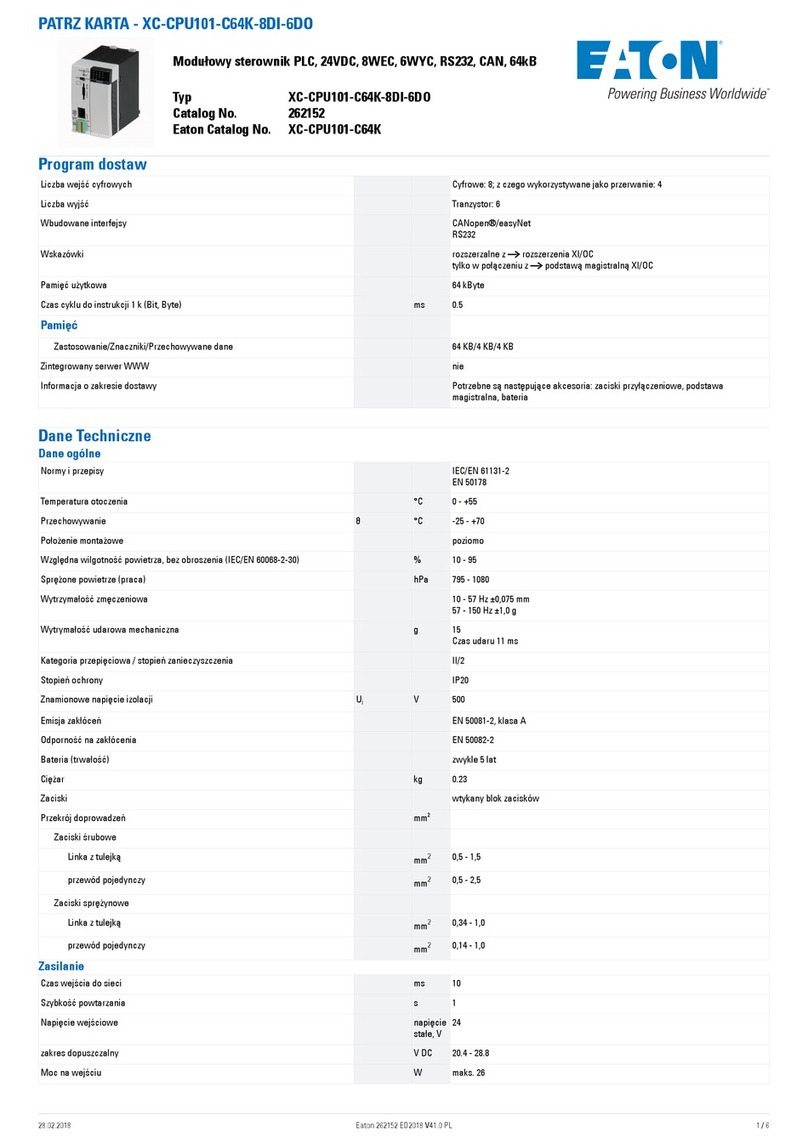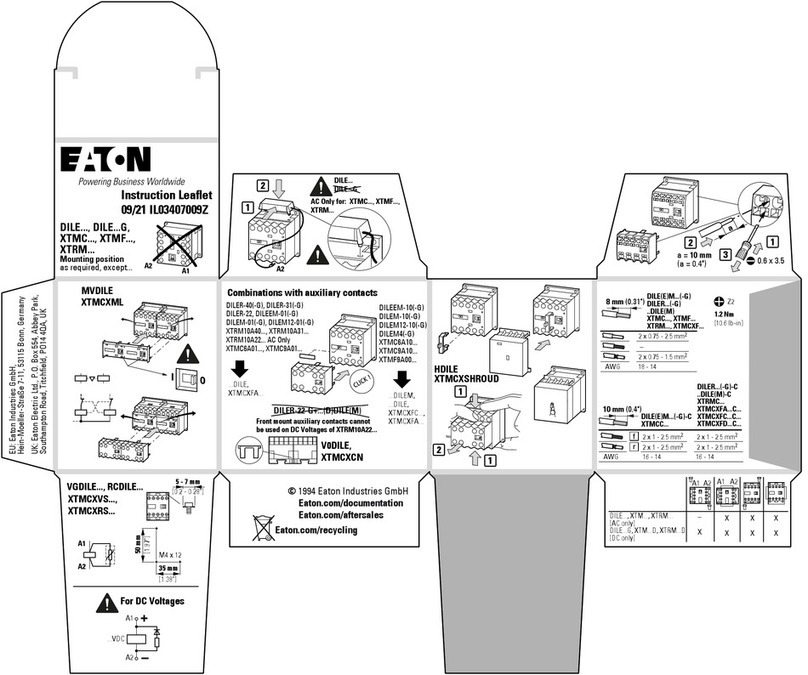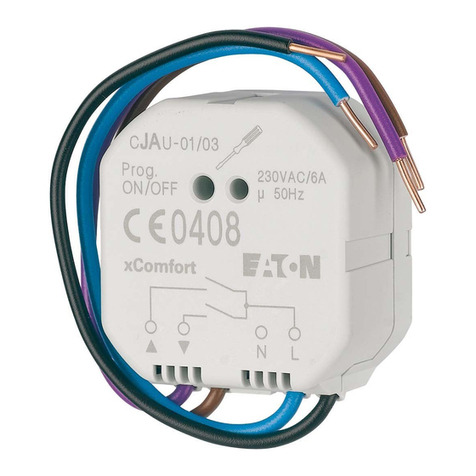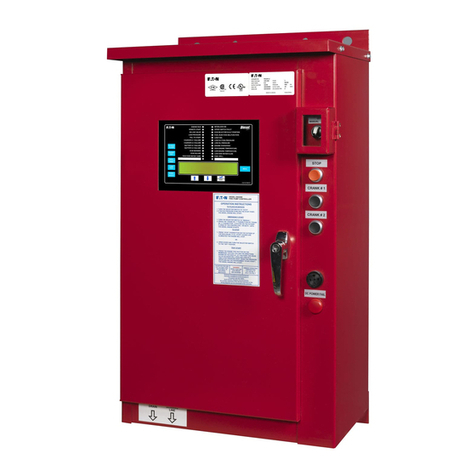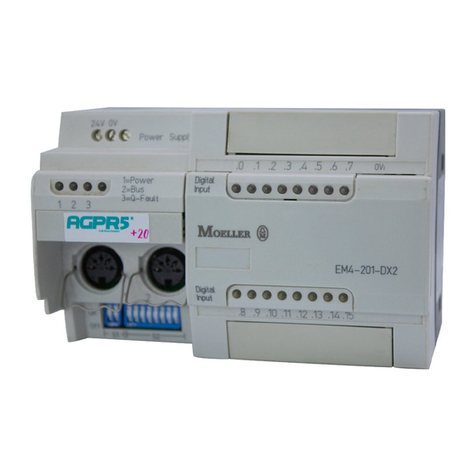
5
TABLE VII - RECOMMENDED DRIVING TORQUE
Driving
Torque
(lb-in.)
Fig. 7
Item
Re er.
Fig. 8
Item
Re er.
Driving
Torque
(lb-in.)
Fig. 7
Item
Re er.
Fig. 8
Item
Re er.
Location (Qty.)
Coil Terminals (4)
OLR Bus Connections (6)
V200 Base Mounting Screws (4)
Mechanical Interlock Adjustment
Screws (reverse only) - (4)
Location (Qty.)
7-9
380-400
60-65
25-30
1
2
4
-
-
-
S
-
Coil Mounting Screws (2)
Lug Bolts (6)
Preasure Wire Connectors (6)
10-15
380-400
380-400
5
6
7
M
-
-
CONTACT FORCE AND ALTITUDE
A Vacuum motor controller is a ected by atmospheric
pressure on the bellows o the vacuum bottle. Up to
an altitude o 2km (6600 eet), the contactor is designed to
tolerate normal variations in barometric pressure. I the
contactor is to be operated over 2km (6600 eet) above sea
level, consult the actory.
CONTACT WEAR ALLOWANCE
Contact material vaporizes rom the contact aces
during every interruption and condenses inside the
bottle. This is normal, and is provided or by overtravel,
or wear allowance. When the contactor is ully closed,
there is a gap underneath the lower bottle nut and the pivot
plate. See Figure 8. As the contacts wear, this gap
decreases. When any gap goes below .020 in., the unit
should be replaced. Use the .020 in. thick ork-shaped
overtravel gauge supplied or this measurement. Part
No. 7874A59H01.
CHECK-OUT, VACUUM INTERRUPTERS
The dielectric strength o the interrupters should be
checked be ore the contactor is energized or the irst
time and regularly therea ter to detect any deterioration
GENERAL
The contactor portion o a V200 or V210 controller
(see Figure 7) has its main contacts sealed inside
ceramic tubes rom which all air has been evacuated,
i.e., the contacts are in a vacuum. No arc boxes are
required, because any arc ormed between opening
contacts in a vacuum has no ionized air to sustain it. The
arc simply stops when the current goes through zero as
it alternates at line requently. The arc usually does not
survive beyond the irst hal cycle a ter the contacts
begin to separate. The ceramic tube with the moving and
stationary contacts enclosed is called a vacuum interrupter
or a bottle, and there is one such bottle or each pole o
the contactor. A three-pole contactor has three vacuum
bottles. A metal bellows (like a small, circular
accordion) allows the moving contact to be closed and
pulled open rom the outside without letting air into the
vacuum chamber o the bottle. Both the bellows and the
metal-to-ceramic seals o modern bottles have been
improved to the point that loss o vacuum is no longer cause
or undue concern.
The moving contacts are driven by a molded plastic
crossbar supported by two pre-lubricated ball bearings
that are clamped in alignment or long li e and ree
motion.
The contacts in an unmounted bottle (vacuum inte-
rupter) are normally-closed, because the outside air
pressure pushes against the lexible bellows. For
mounted on reversing contactors rom the actory are
adjusted at the actory. I the mechanical interlock is
removed and reinstalled or any reason, its per ormance
must be checked and readjusted i necessary. This is
done by energizing the orward contactor at rated volt-
age and then momentarily energizing the reverse
contactor with the electrical interlocks overridden. The
electrical interlocks can be overridden by removing them
rom their recesses. With the reverse contactor locked
out, the bottle stem arthest orm the mechanical inter-
lock on the reverse contactor should close about .040.
I it closes more than .40,. the mechanical interlock must
be readjusted. Per orm the same test locking out the other
contactor. When adjusted correctly, the mechanical interlock
arms should have room to pivot back and orth reely. I
they do not, the mechanical interlock is adjusted too tightly
and must be readjusted. A ter The mechanical interlock is
correctly adjusted, be sure and tighten all screws.
CAUTION: Any work on the controller should be
performed only with the power OFF. Remember to
enable the electrical interlocks before returnin
the unit to service. Failure to do so may result in
serious injury!
Note: The momentary energization o the locked out
contactor should only last a ew seconds or the contactor
coil could be damaged. This lockout test should be per ormed
with all o the busswork in place. Failure to do
so could damage the mechanical interlock.
contactor duty, the contact must be normally-open when
the operating magnet is not energized. There ore, the
contacts o the vacuum bottles must be held apart
mechanically against the air pressure when used in a
contactor. In the contactor, all o the bottles are held
open by a single kickout spring in the rear o the con-
tactor. The kickout spring pulls against the moving
armature and crossbar and thereby orces the bottles
into the open position. In the open position, the cross-
bar is pulling the moving contacts to hold them open.
The controller is intended to be mounted with its
mounting plate vertical and the moving stem o the
vacuum bottles aimed down. However, mounting posi-
tion is not critical. I an unusual position is required, it
is wise to check the pickup voltage on a bench be ore
installation, with the controller oriented as it will ulti-
mately be installed. The kickout spring ca be adjusted
as described under Kickout Sprin Adjustment, i
required to obtain the correct pickup voltage.
CAUTION: The easiest way to close the contactor
is to ener ize the coil. If the coil is ener ized for this
or other maintenance, use adequate care to uard
a ainst electrical shock.
Do not re-adjust the bottle nuts to reset overtravel
as the bottles wear. Once placed into service, overtravel
should be checked but not adjusted. A star-wheel
lock is included or locking the bottle nuts o each bot-
tle to prevent tampering.
V200, V210, 540 AMPERE VACUUM MOTOR CONTROLLER I.L. 17089
